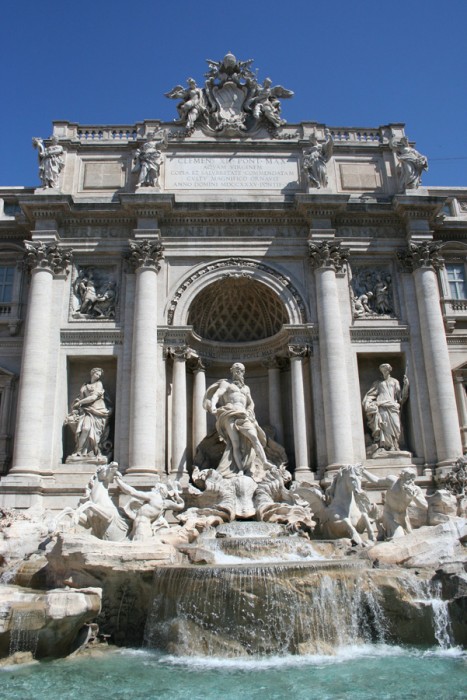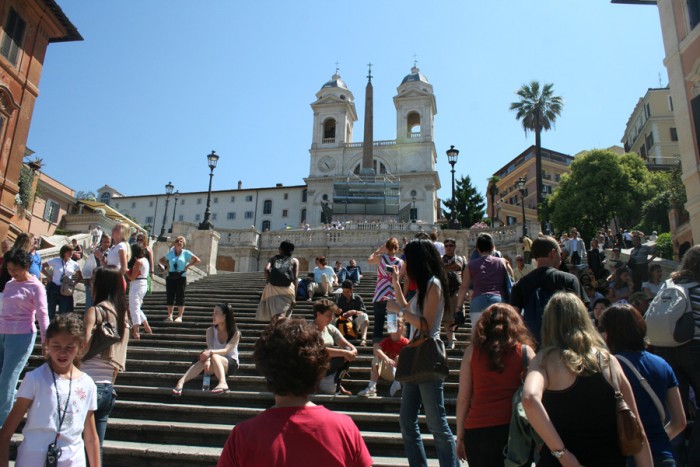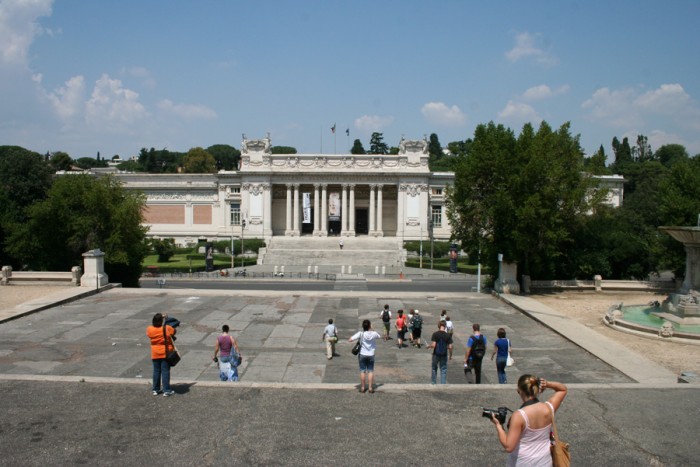June 9th, 2007 by Rachel | Country: Italy | No Comments »

The Trevi Fountain or also known as Fontana di Trevi, is a grand, magnificent wishing fountain. Quite a few people who believe in superstition throw coins in this fountain to try to earn their wish. I was mistakenly thinking that Bernini, a very well known Baroque sculptor, completed these sculptures at this beautiful fountain because each sculpture has a lot of drama and movement. In other words, each sculpture looks like a snapshot of an action in moment. The huge sculpture in the center of the fountain is known as the Ocean and was completed by Pietro Bracci. This sculpture reminds me of Bernini’s “David” because, again, there is a lot of motion and drama. Like “David,” who has a lot of twisting movements and is seemingly fighting with someone, the Ocean has twisting movements too and is seemingly interacting with other people or animals, which he is, the sea horses and the Tritons. On both sides of the fountains, in the niches, the sculptures are figures of Abundance and Health. They were completed by Filippo della Valle. Bernini was originally commissioned to construct this fountain by Urban VIII, but this project was unfortunately abandoned after the Pope’s death. However, a century later, another architect named, Nicola Salvi, was able to complete this plan.

The Piazza di Spagna is an area in Rome that is partly owned by the Spanish and French. In other words, the Spanish and the French embassy are located there. That’s how Piazza di Spagna got its fame – the first permanent embassy was established there. This area is bloated with luxury boutiques, and also connects to a grand staircase, the Spanish Steps, which is also called Scalinata della Trinita dei Monti. It was built in between 1502 and 1585, during the Baroque era, by Francesco de Sanctis although, there are some debates that there were some other architects involved in this project. Believe or not, the French ambassador, Etienne Gueffier provided funds for this project. The intention of this project is to continue to modernize the architecture after the Renaissance era. This Spanish Step is a very typical Baroque design as it has curvilinear lines and a sense of rhythm throughout the composition of this architecture. This architecture also has a great sense of grandeur, as it’s a massive staircase that can seat perhaps a thousand.

Galleria Nationale d’Art Moderna is loaded with beautiful artwork created by 19th and 20th century artists such as Edvard Much, Vincent Van Gogh, Piet Mondrian, and Gustav Courbet.
After visiting the Galleria Nationale d’Arte Moderna, I went to the Villa Giulia, Pope Julius III’s summer villa, built by Vignola and Ammannati. This architecture consists of buildings from the Mannerist era, an era after the Renaissance and before the Baroque era, along with gorgeous gardens. While this architecture represents the Mannerist era, it also consists of Etruscan art including sculptures and vases that look like ancient Greek vases. This villa became an Etruscan museum in 1889.